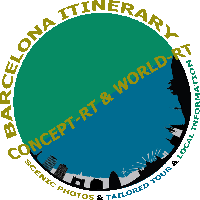Castell, human castle
Castell is a catalan word which means castle (castillo in spanish), you may not hear this word but if I tell you “human tower” or “human castle”, may be ??? Castell, by definition, is human castle. This catalan tradition consists that each “casteller” (human castle member) has to help its other comrades to form and to build a castle. Normally people have more tendencies to say human tower than human castle because the form looks more like a tower than a castle and since november 16, 2010, it has been declared as UNESCO Masterpieces of the Oral and Intangible Heritage of Humanity. |
|
The history has no record about this tradition but most of the people think that it was born in 1687 at Almagesi – a valencian town in the Ribera Alta region. In its origin, the celebration, named “muixeranga” or “moixiganga” (dance of valencians), was a folkloric activity which consisted, at a start, at a dance, to end, at a little human castle.
3 of the dancers went up in the back of its partners and the first dancer climbed above them in order to pay homage to the Virgin. With its expansion across Catalonia, people preferred to let down the dance part and devoted to build more and more beautiful and higher the castle.
The castle is composed of different parts:
- Pinya is the base of the castle where some members support the structure.
- Tronc is the central of the castle where some members form the structure.
- Folre is situated above the “pinya” in order to strengthen the “tronc” and to lift it up one level more.
- Manilles are the “castellers” located above the “folre” in order to reinforce the “tronc”.
Some of those human castles can rise up until 9 levels and really it is quite impressive. More than a tradition, it is a competition in which each group (different cities, quarters or towns) tries to do the most beautiful, complex and higher one to be the first in the ranking.
The competition consists, after that the castle is built, an “anxaneta” (a little boy or girl) has to climb up to the summit in order to pass over it without that the castle collapses. After raising his/her hand to welcome the people, he/she has to go down.
In the recent past, the “anxaneta” didn’t wear a helmet and occasionally, when the castle collapsed, the boy/girl fell on his/her head which caused his/her death. Now, the rules implicate that they have to wear one in order to protect himself/herself.
This performance can be seen on many days during the year although the season starts strongly in june to end in november. Normally, it always takes place on sunday at midday in the town hall square as one of the main features of the local holiday festivities and at Barcelona, it is at plaza sant jaume in the barrio gòtic district.
During the high season, it occurs almost every weekend at Barcelona but the most important date is september, 24th – the day of “La Mercè” and the performance is on the nearest sunday.
If you want to know more about the different traditions at Barcelona, I invite you to read this topic Traditional celebrations at Barcelona.


